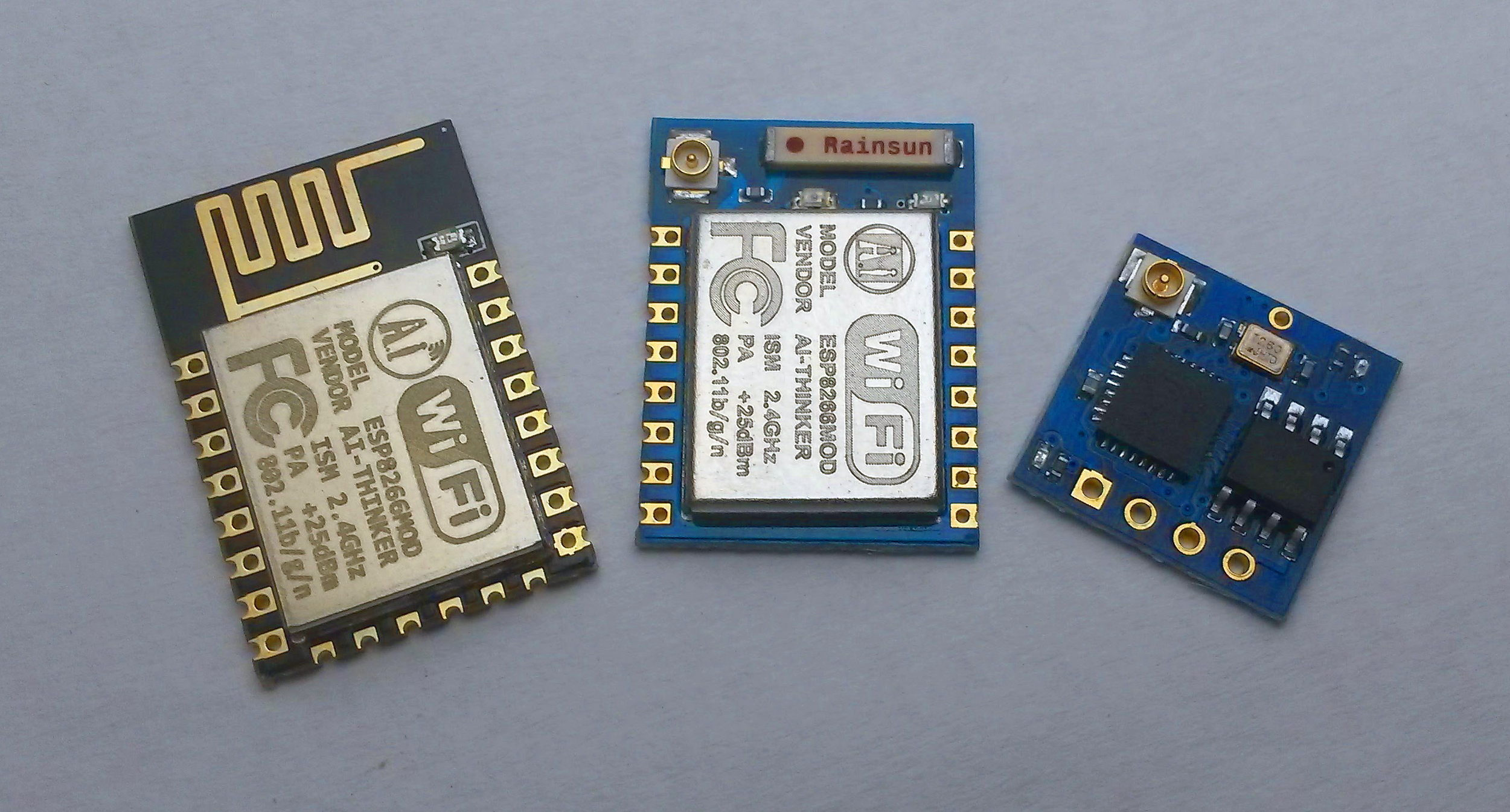ESP-12 modules are great for integration to custom product as they fit nice on a PCB. However the prototyping process can be painful due to the incompatibility with standard 2.5 mm pin headers. You can use a full development board like NodeMCU with all its imperfections (size, high current consumption1 compared to ESP sleep states, mismatched pin names 2, etc.) or you can take a soldering iron, wire and do all the necessary wiring as a “3D post-modern artistic piece from a copper wire”. To remind; ESP8266 requires several GPIO pins to be pulled-up or pulled-down in order to boot from flash memory or to enter a bootloder (see ESP8266 Wiki for details), so a little bit of wiring is unavoidable. In some cases you might want to attach a voltage regulator.
Continue reading “Cheap Minimal ESP8266 ESP-7/812 Breakout Board”
